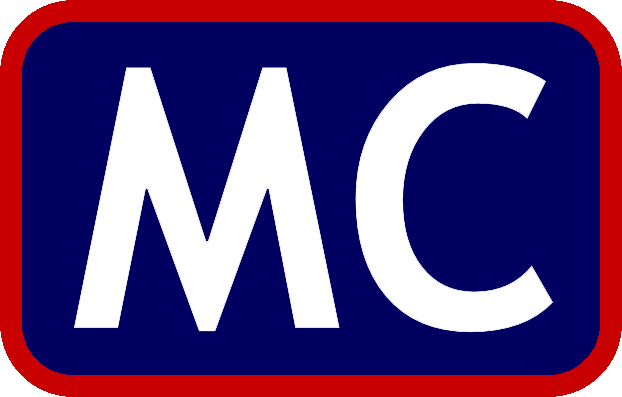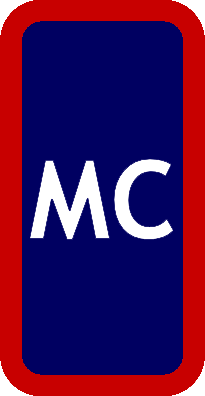Publication Highlights
The M&S Community of Interest: Technical Collaboration Across the Enterprise
Interservice/Industry Training, Simulation, and Education Conference (I/ITSEC) 2011Orlando, FL - November 28, 2011
Co-authored with Dr. D. Lashlee
ABSTRACT: The Modeling and Simulation (M&S) Community of Interest (COI) was established and chartered in 2004 with a set of Operating Guidelines that follow DoD guidance, as described in the Net Centric Data Strategy and the Guidance for Implementing Net-Centric Data Sharing. In 2010, a DoD M&S Enterprise Data Strategy was developed to plan for future challenges regarding M&S data and provide efficiencies for M&S across the Department. This strategy provides overall vision, guidance, and policy recommendations needed to achieve governance and management of M&S enterprise data issues facing the Department today, and the M&S COI is a main component of the strategy. The M&S COI is a collaborative group of M&S data users whose mission is to make M&S data and data-related tools & services viable and visible to the Components and Communities enabled by M&S. The M&S COI will provide a collaborative forum to advise, educate, and influence the wider Defense community on M&S Data issues. In addition, an M&S Enterprise Data Action Plan is under development for advancing the strategic objectives of interoperability and reuse for M&S, and the M&S COI will be a main driver for these implementation activities.
This paper presents a discussion of the M&S COI and the revised and updated set of Operating Guidelines it will follow. The M&S COI structure and implementation is also presented, which consists of persistent working groups and technical teams that focus on technical level enterprise data issues. An important aspect of the M&S COI is to foster collaboration among other active and effective DoD COIs, as well as collaboration across other organizations within the defense community. The M&S COI structure also includes expedient working groups and stakeholder forums that are part of the overall collaboration effort for specific project-focused or short-term efforts involving M&S enterprise data.
An Emerging DoD M&S Enterprise Data Strategy
Spring Simulation Interoperability Workshop 2011Boston, MA - April 2011
Co-authored with Dr. D. Lashlee
ABSTRACT: Modeling and Simulation (M&S) has become more powerful and less expensive to implement due to dramatic advances in the underlying technologies. However, with resources within the U.S. Department of Defense (DoD) on the decline, and rapidly changing Department priorities, it remains essential to find improved ways to develop and field new M&S and training systems while maintaining current systems. The rapid expansion of the use of M&S data, services, and tools, along with improved processes to exploit them, has been accompanied by a lack of strategic approaches in the areas of M&S data product generation, M&S data visibility, M&S data standardization, and Department-wide management of the wide spectrum of data resources that support M&S.
Within the Department today, there is a need for an overarching enterprise-level data strategy for M&S that is aligned with the DoD's Net-Centric Data Strategy and that provide efficiencies for M&S. For instance, the DoD benefits from having credible, authoritative data to use for representing characteristics of the natural environment that affect military operations. However, the process of developing operationally realistic representations from authoritative source data takes time and money. Furthermore, the complexity of this endeavor is not always well-understood at the leadership level, or in many cases, by the systems engineering and systems development communities. A comprehensive enterprise data strategy will help provide the overall vision, guidance, and initial policy recommendations needed to achieve governance of enterprise issues. It will also provide a roadmap for advancing the strategic objectives of M&S interoperability and reuse.
This paper summarizes key concepts and important elements of a DoD-wide M&S Enterprise Data Strategy in the initial stages of development, and clarifies the benefits of enterprise implementation across M&S efforts in the Department.
C4I Training on Demand
European Simulation Interoperability Workshop 2004Edinborough, UK - July 2004
Co-authored with Dr. G.E. Layman
ABSTRACT: A comprehensive suite of advanced embedded training capabilities developed at the Naval Research Laboratory (NRL) provide various levels of Command, Control, Communication, Computer and Intelligence (C4I) training for the Navy. Both operator and team training applications are being released to the fleet as part of the Global Command and Control System-Maritime (GCCS-M) upgrade currently under way. The ultimate goal is C4I training on demand that is readily available, easy to set up and deliver, and can be applied to the individual operator level, small team, or larger multi-team and multi-ship training environments.
The Training Tutor provides operator training by injecting scripted scenarios into an operational system. A trainer can use existing training scenarios or create new scenarios using authoring tools provided. Lessons may be prepared that include visuals aids, training instructions, map highlighting and various display controls. Lessons walk an operator through the use of the GCCS-M core functions and mission applications. It can teach basic system skills to a new user or more advanced features of the C4I system.
The C4I Team Training System (CTTS) is an evolutionary development of an open architecture core training system that can be expanded by developers to incorporate models and simulations that accomplish a variety of training objectives. The CTTS can be used by trainers to develop advanced scenario based training to be executed on the GCCS-M local area network (LAN). It can be used to train users in assessing tactical situations and decision making. The trainer can tailor the training scenario to add relevance and achieve specific objectives. The CTTS is fully embedded within GCCS-M systems, and can provide training aboard Navy ships while underway without interfering with normal C4I operations, in port and at ashore training facilities
Advanced C4I Training for the Global Command and Control System–Maritime (GCCS–M)
Spring Simulation Interoperability Workshop 2004Washington, DC - Apr 2004
Co-authored with Dr. G.E. Layman & W. Harrington
ABSTRACT: A set of advanced embedded training capabilities developed at the Naval Research Laboratory (NRL)
provide various levels of Command, Control, Communication, Computer and Intelligence (C4I) training for the Navy.
Both operator and team training applications are being released to the fleet as part of the Global Command and
Control System-Maritime (GCCS-M) upgrade currently under way.
The Training Tutor provides operator training by injecting scripted scenarios into an operational system. A trainer can
use scenarios provided or create new scenarios using authoring tools provided. Lessons may be prepared that include
visuals aids, training instructions, map highlighting and various display controls. Lessons walk an operator through the
use of the GCCS-M core functions and mission applications. It can teach basic system skills to a new user or more
advanced features of the C4I system.
The C4I Team Training System (CTTS) is used by trainers to develop advanced scenario based training to be executed
on the GCCS-M local area network (LAN). It is used to train users in assessing tactical situations and decision making.
The trainer can tailor the training scenario to add relevance and achieve specific objectives. The CTTS is fully
embedded within GCCS-M systems, and can provide training aboard Navy ships while underway without interfering
with normal C4I operations, in port and at ashore training facilities.
Other training capabilities are being developed to capture the real world Common Operational Picture (COP) during
exercises for use as the basis of CTTS training development, a comprehensive C4I reconstruction and exercise training
assessment, a Range Fusion System (RFS) that will link to Navy Training Ranges and provide a ground truth data
stream into the GCCS-M for training exercise environments. A Transit Training capability is also being developed that
will reconstruct pre-deployment battle group exercises to provide mission specific training while in transit to forward
deployed areas.
This paper describes the capabilities of these advanced C4I training tools and provides insight into future embedded
training that is being addressed to take advantage of the current C4I focus on the Global Information Grid and network
enabled warfare applications.
Request any of the above full papers: mcgroder@pm.me
Publications List
2. McGroder, D., Lashlee, J.D., "An Emerging DoD M&S Enterprise Data Strategy,” Paper 11S-SIW-029, presented at Spring Simulation Interoperability Workshop (SIW), Boston, MA, Apr 2011.
3. McGroder, D., Layman, G., "C4I Training on Demand,” Paper 04E-SIW-062, presented at European Simulation Interoperability Workshop, Edinburgh, UK, July 2004.
4. McGroder, D., Layman, G., Harrington, W., "Advanced C4I Training for the Global Command and Control System–Maritime (GCCS–M),” Paper 04S-SIW-149, presented at Spring SIW, Washington, DC, Apr 2004.
5. McGroder, D., "The C4I Team Training System,” Paper 03F-SIW-069, presented at Fall SIW, Orlando, FL, Sep 2003.
6. Layman, G., Daly, J., McGroder, D., "Embedded Training Courseware Developer’s Manual,” NRL, 1999.
7. McGroder, D., "Embedded Training Tools for Large Real-Time Systems," NRL Report 9749, ep 1995.
8. McGroder, D., "Graphics Software for Event Reconstruction in Navy C2," NRL Report 9365, 1991.
9. McGroder, D., "3D Computer Graphics for Molecular Modeling," M.S. Thesis, SUNY Buffalo, 1986.
10. Srinivasan, S., McGroder, D., Shibata, M., & Rein, R., "MOSES: A Molecular Graphics Simulation Program in Real Time," Biomolecular Stereodynamics, Vol.1, presented at SUNY Albany, 1985.


